Globus Tour
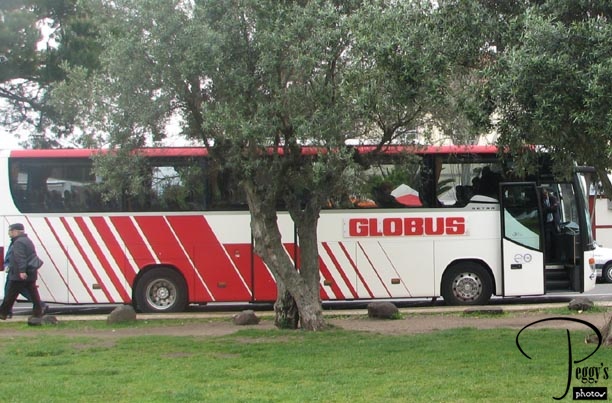
Today, Globus gave us a short tour of Alfama and then a longer tour of Belem. Almost all the companies that offer all–Portugal tours have similar itineraries, but Globus was the only one that made a stop in Vilamoura on the Algarve in Southern Portugal, where I wanted to spend a few days. This is the main reason that I chose to go with Globus. I also had a recommendation for Globus by someone who had taken tours from them. The reason that I landed in Lisbon during Easter week was that the particular tour starting the day after Easter was a guaranteed–to–go tour. I was more than pleased going on this Globus tour. Photo: Our Globus tour bus.

Globus Tour
Globus Tour
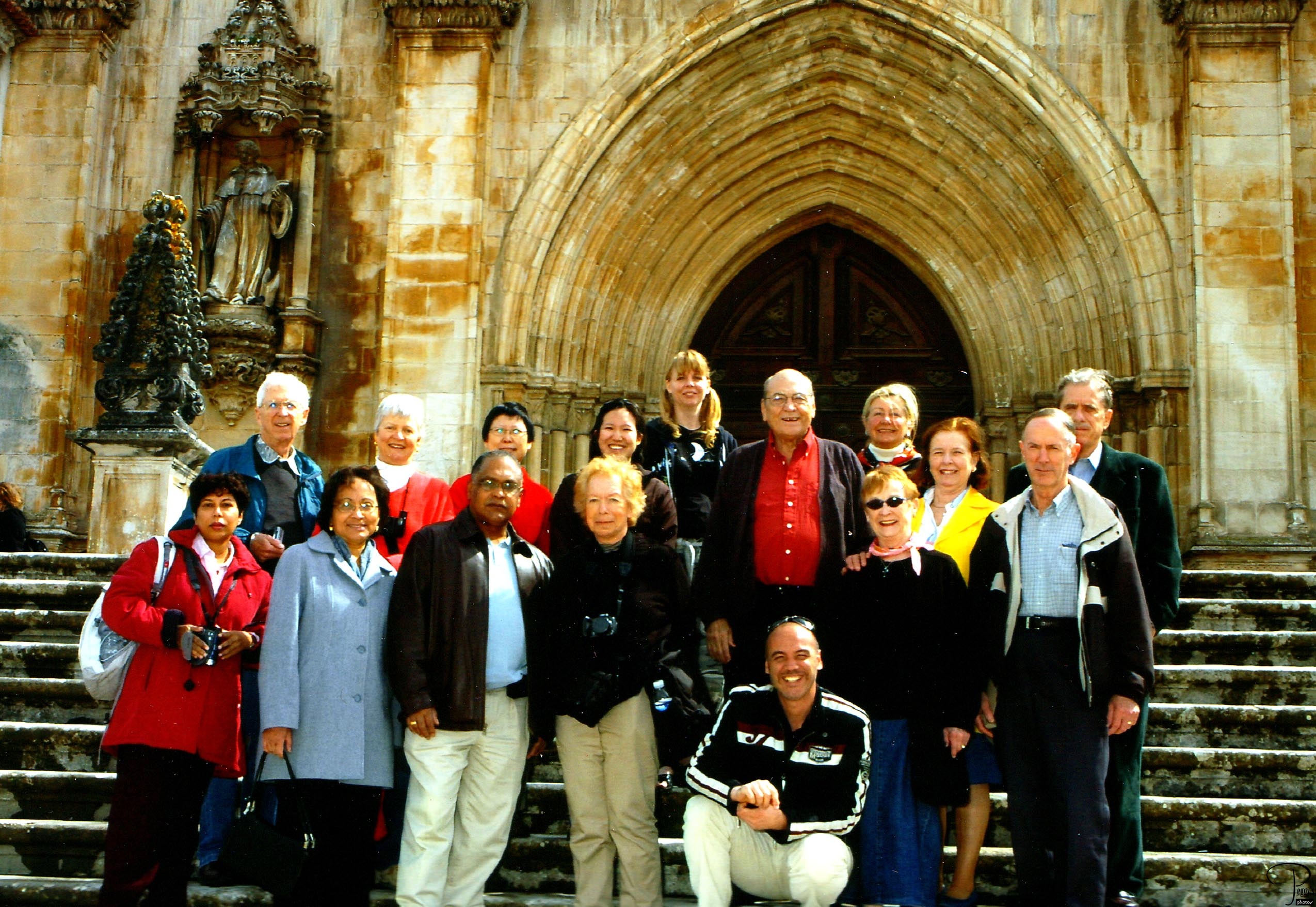
That was a pretty big tour bus for our small tour group––total of 15. Wow, we all knew we had made out having such a small group. This photo was taken the next day, but here is our group. First row, from the left: Geraldine (from Australia); Ginette and Harry (originally from Haiti now with Harry working in Paris); me; Rui (pronounced “Rue–ee”), our Globus tour guide; Mary (North Carolina––husband Hal is the man in the red shirt to the left, on row up). Second row, from the left: Bill and Muriel (Canada); Min (Singapore) with daughter Cheryl (who lives in the U.S.––Georgia); then next to Hal, Jim and Eleanor (New Jersey). Top row: Sonia (Canada); Renate (Oklahoma––her husband had to leave the tour for medical reasons); and Lynn (West Los Angeles). So a tour group of different ages and from different places but one that turned out to be very compatible and I very much enjoyed traveling with them.

Globus Tour
Alfama
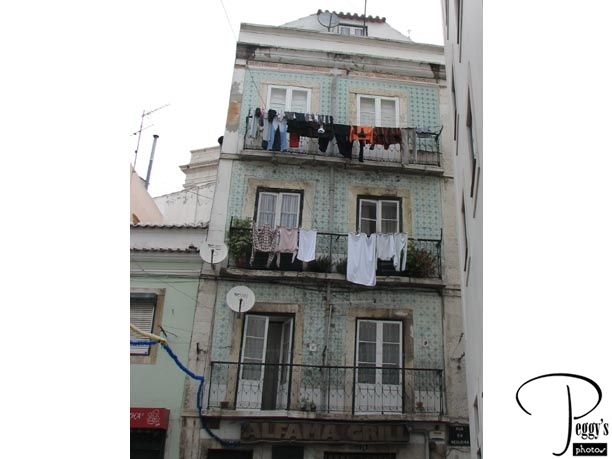
Our local guide led our tour today. First stop, Alfama.

Alfama
Alfama
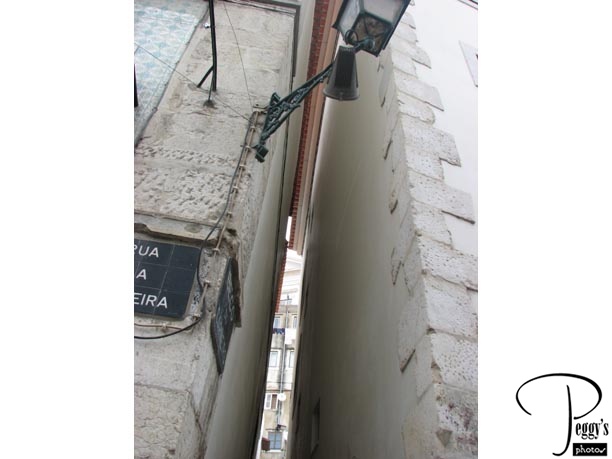
Even though I had been a couple of times already in Alfama, there is always something new to learn about this section of Lisbon. Our guide told us to look up at the edges of these roofs and how they almost touch each other but the buildings are farther apart. Although Alfama didn’t experience the brunt of the 1755 Lisbon earthquake, some of its buildings still moved; hence, the reason why the edges of these roofs are so close together.

Alfama
Alfama
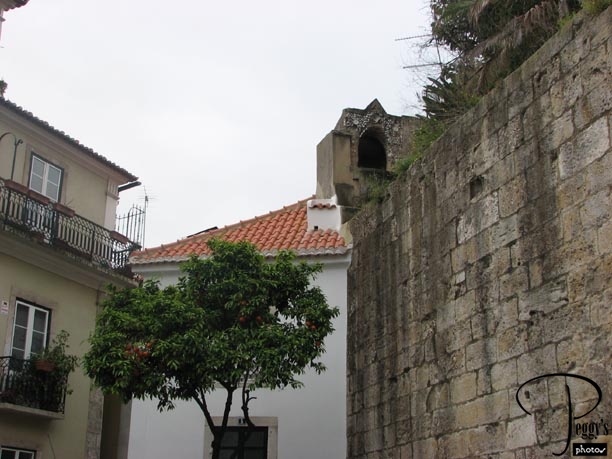
An orange tree in Alfama. This orange tree and most of the ones that you see in city areas produce bitter oranges, ones not for eating but for making marmalade.

Alfama
Alfama
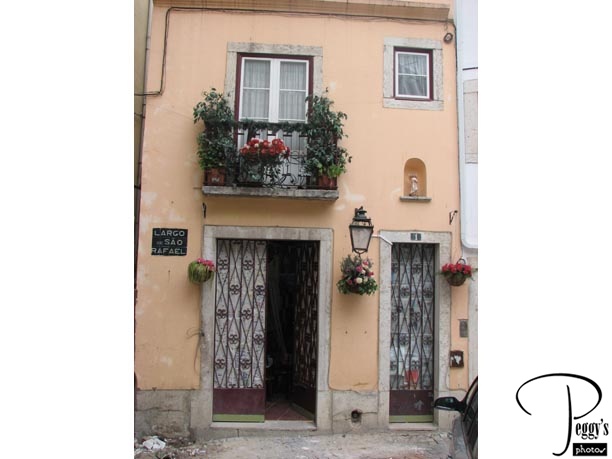
A pretty house in Alfama.

Alfama
Alfama
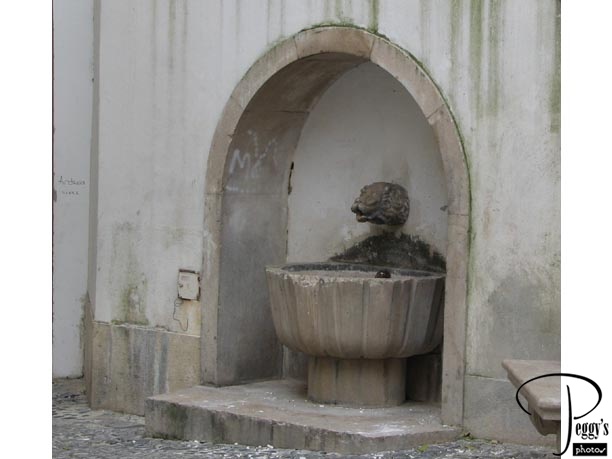
Alfama fountain. You pass by old fountains such as this one often. However, it is only seldom that you will see water coming out of them––this one looks dry.

Alfama
Alfama
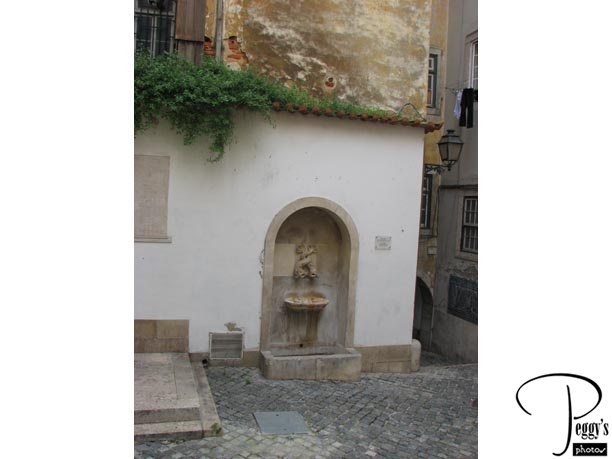
Another fountain.

Alfama
Alfama
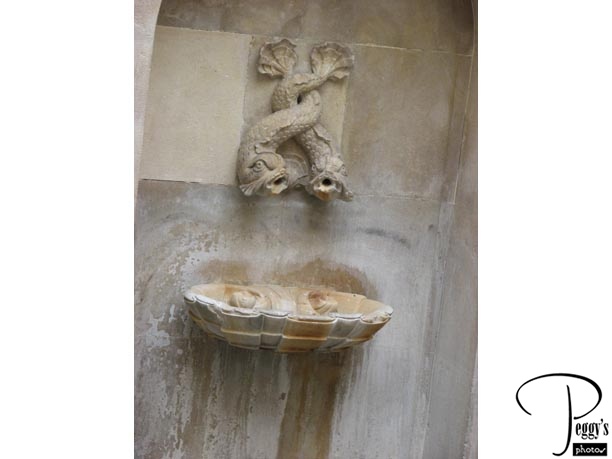
Close–up of the fish.

Alfama
Alfama
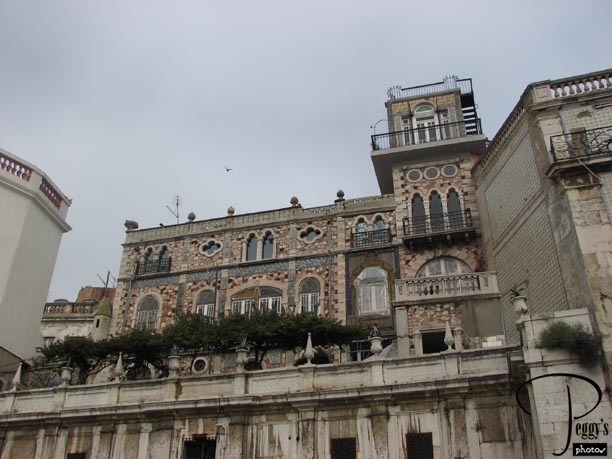
On the way back to the bus I saw this building–I have no name or history for it but it is an interesting building.

Alfama
Belem
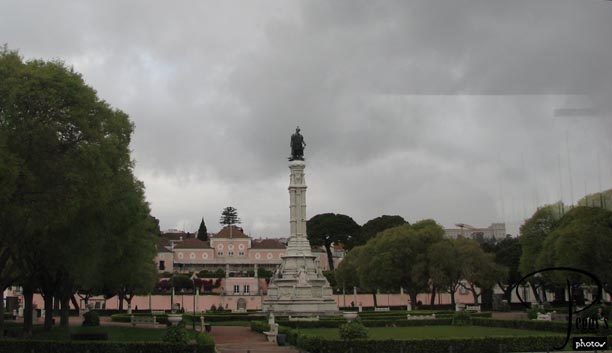
Our bus drove us to Belem which is about three miles from the historic area of Lisbon. We passed the pink President’s Palace. I had a quick tour of Belem two days ago aboard the top of a hop–on hop–off bus, so you already have had a preview of the places our tour took us to today.

Belem
Belem
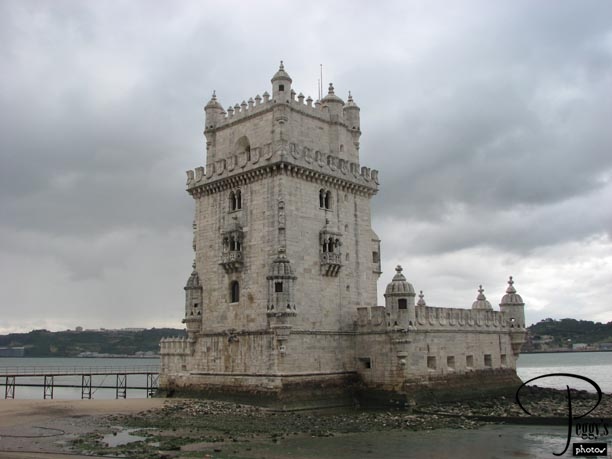
We stopped at the Torre de Belem. The fortress was commissioned by King Manuel I in 1515–17. When built, it was situated in the middle of the River Tejo. The fortress hasn’t moved but the river has. It is one of the best examples of the architecture called Manueline (which uses a maritime theme) though it has some features in other styles such as its Moorish–style watchtowers.

Belem
Belem
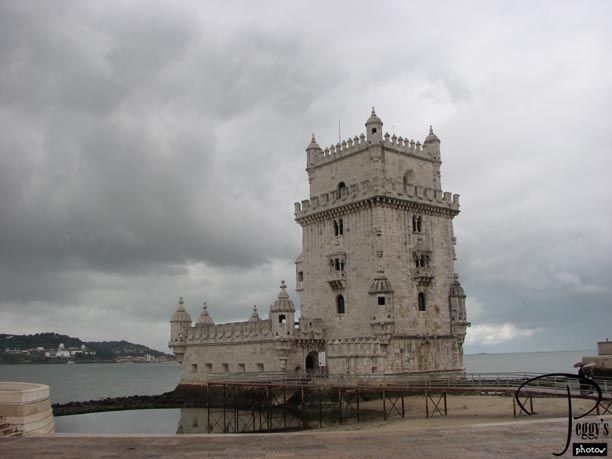
Photo of the Torre de Belem taken from another angle.

Belem
Belem
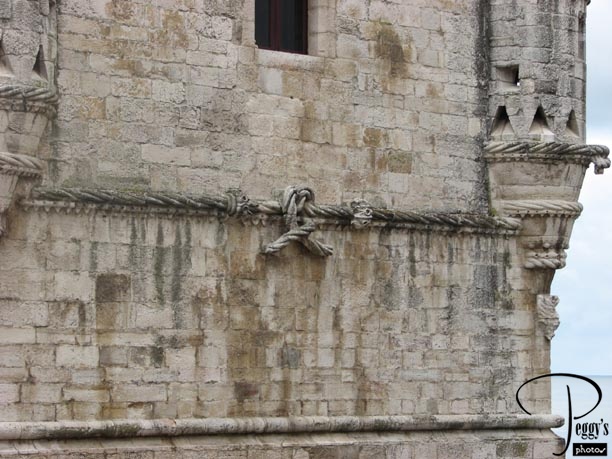
Note the “maritime rope” on the outside of the tower.

Belem
Belem
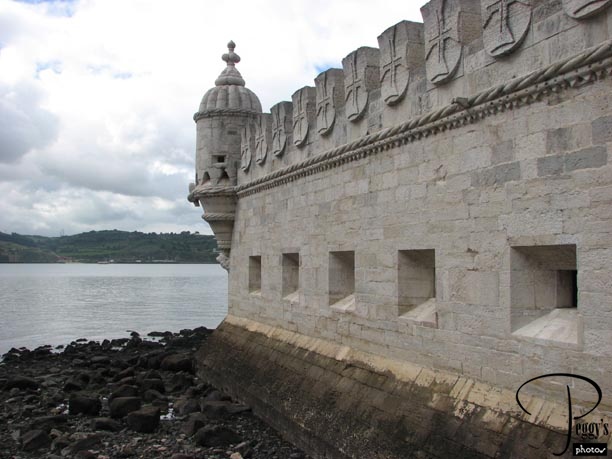
One side of the Torre de Belem.

Belem
Belem
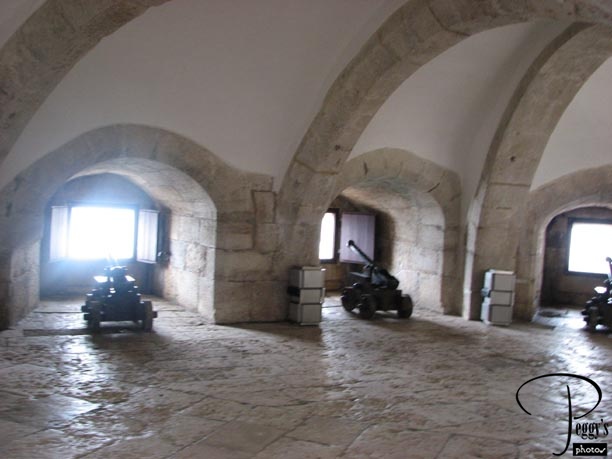
Inside the ground floor. This level was used as a storeroom, for battle stations, and a prison.

Belem
Belem
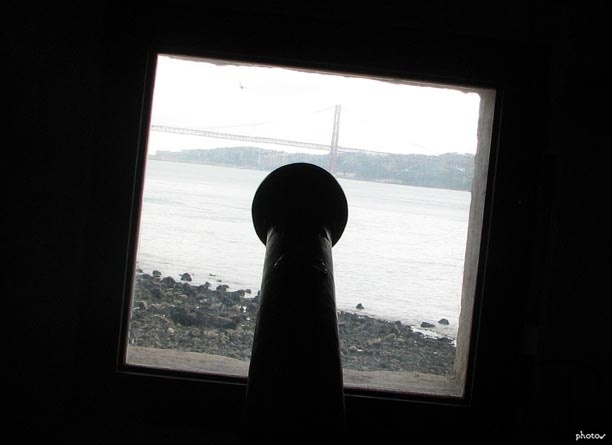
I was curious to know what this cannon was aimed at, so I took this photo. Oh dear!!!

Belem
Belem
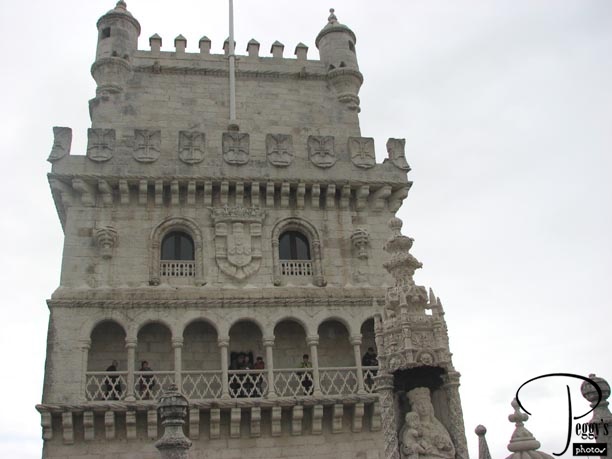
I climbed up one level to take this photo. There is some Italian Renaissance architecture here, such as for the loggia, but above those arches, you can see the royal coat of arms of Manuel I and either side of that armillary spheres, another Manueline feature. The upper floor was the chapel. On the bottom right of the photo, you can see part of the statue of Our Lady of Safe Homecoming, which faces the sea and offered protection for the sailors.

Belem
Belem
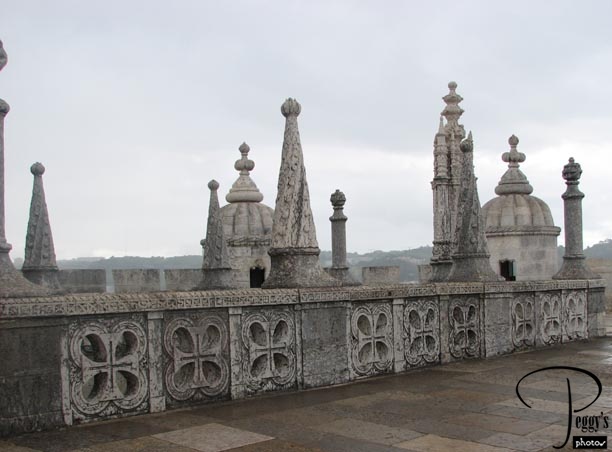
The open area below the loggia.

Belem
Belem
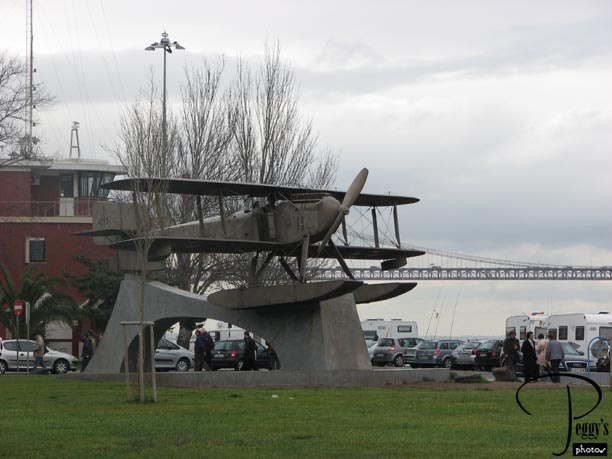
This float plane monument is located next to the Torre de Belem. It commerates the first flight across the South Atlantic––from Portugal to Brazil––undertaken in 1922. The original plane is in Belem’s Maritime Museum.

Belem
Belem
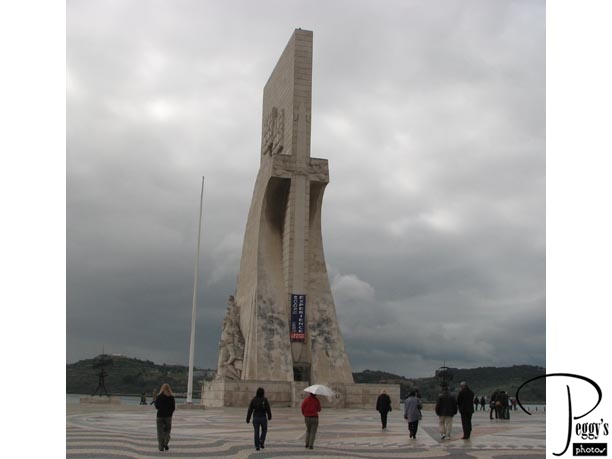
Just a bit farther along is the Monument to the Discoveries (Padrao dos Descorimentos) built in 1960 to commerate the 500th anniversary of the death of Henry the Navigator. It is 170 feet high (52 m) and is in the shape of a caravel, a small trading ship that the Portuguese used.

Belem
Belem
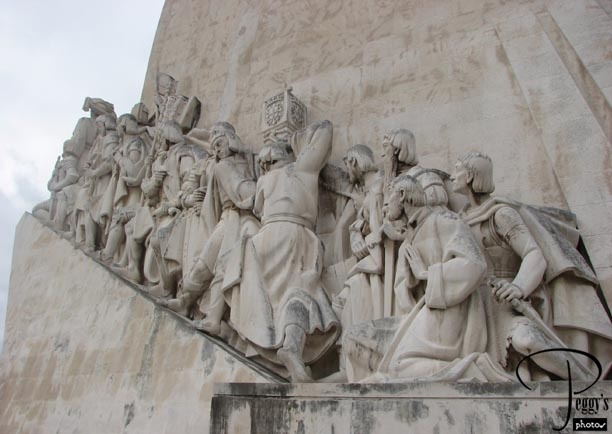
East face of the caravel: Henry the Navigator in front of such notables as King Alfonso V, Vasco da Gama, Magellan, and Cabral.

Belem
Belem
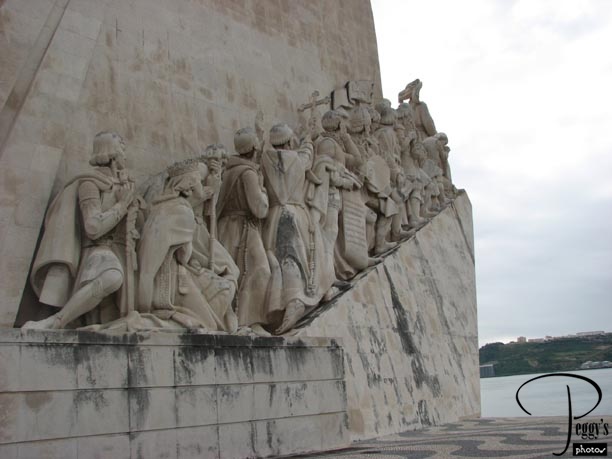
West face of the caravel: Henry the Navigator is again in the front, with such notables as King Manuel I, the poet Camoes, the painter Nuno Goncalves, and other navigators, cartographers, and kings.

Belem
Belem
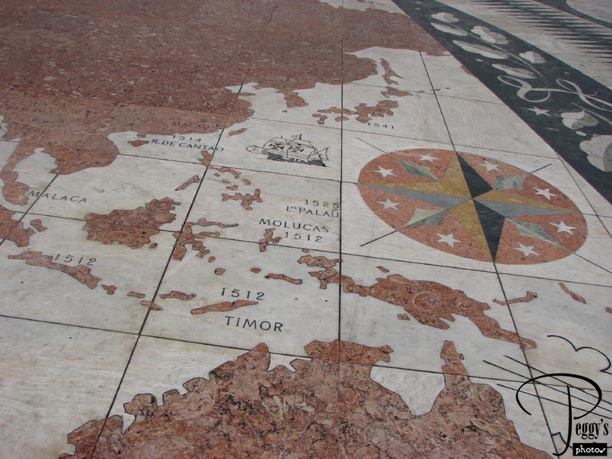
A huge marble mariner’s compass is on the ground in front of the monument with a map of Portugal’s conquests.

Belem
Belem
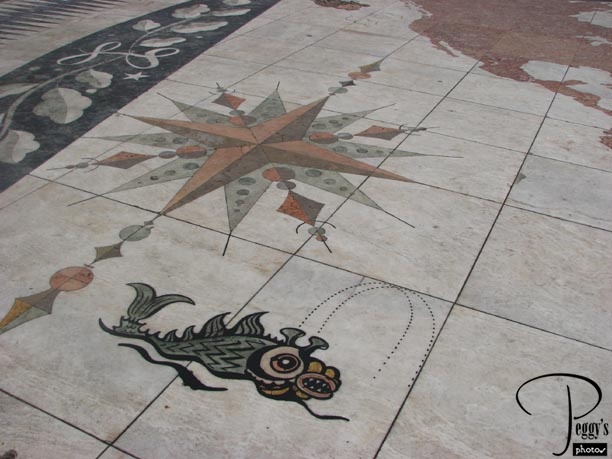
I was curious why no Portuguese conquest appeared on the west coast of the United States, specifically California, as I had visited the Cabrillo National Monument in San Diego many years ago and knew that Juan Rodriquez Cabrillo, a Portuguese, had landed in San Diego in 1542. By surfing the Internet, the reason is that Cabrillo explored under the Spanish flag. The statue of Cabrillo at the Cabrillo National Monument was given to the U.S. by the Portuguese government. In 1543, while exploring the California coast in the area of the Channel Islands, Cabrillo fell while fighting off Indians. He died and is believe to be buried on the top of a hill on San Miguel Island. If you take a trip there, you’ll see a stone cross and burial marker indicating his believed grave.

Belem
Belem
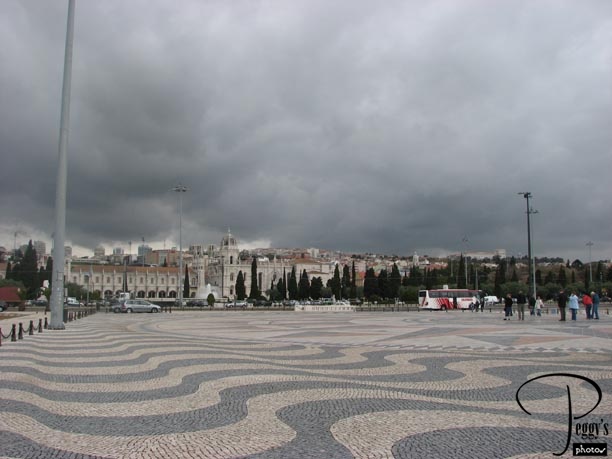
The Mosterio dos Jeronimos (Jerome Monastery) seen from the Monument of the Discoveries.

Belem
Belem
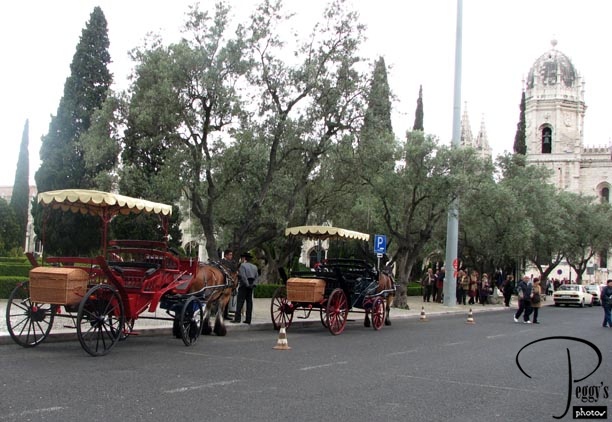
In front of the monastery, one of the modes of transportation in Belem.

Belem
Belem
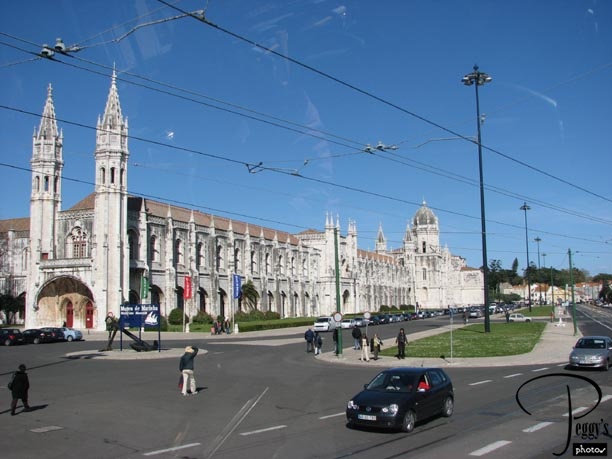
The best photo that I took of the Mosteiro dos Jeronimos was one that I took from atop the hop–on hop–off bus. The monastery was commissioned by King Manuel I about 1501 and was cared for by the Order of St. Jerome until 1834, the year that all religious orders were disbanded in Portugal.

Belem
Belem
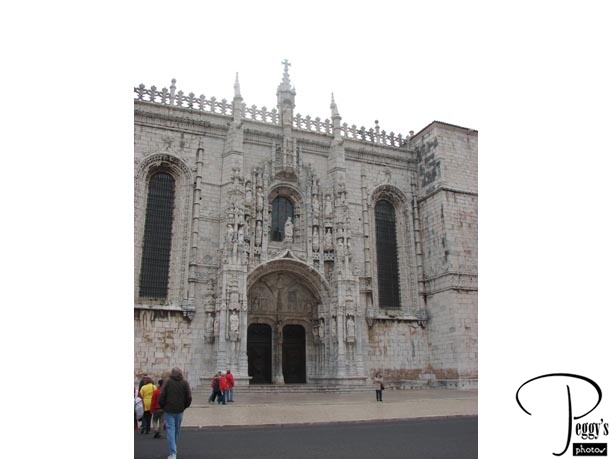
The south portal of the Mosterio dos Jeronimos.

Belem
Belem
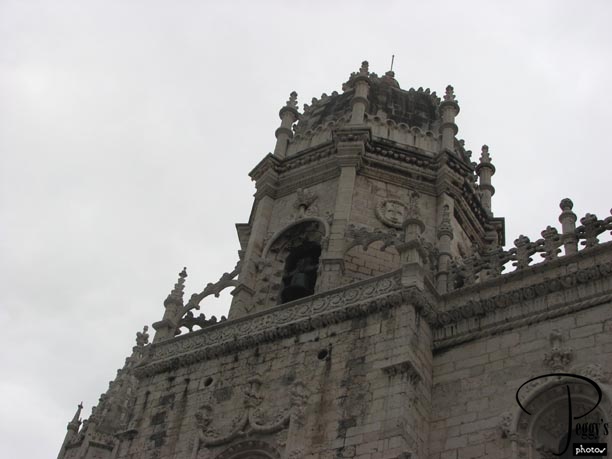
More of the front of the monastery.

Belem
Belem
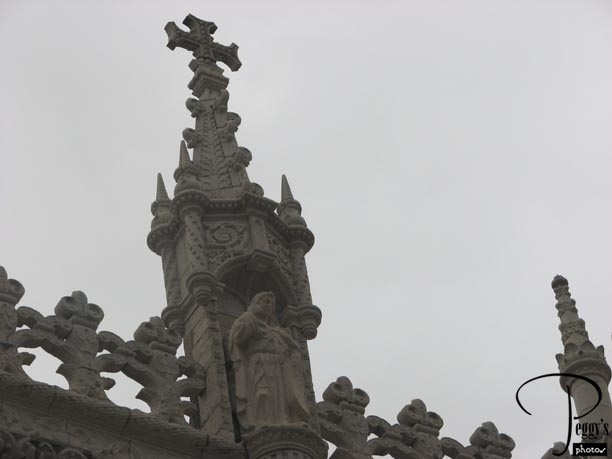
And more.

Belem
Belem

On the south portal of the Mosterio dos Jeronimos.

Belem
Belem
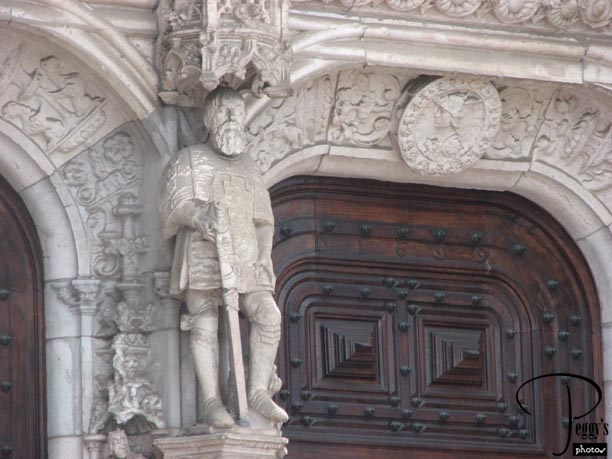
Henry the Navigator.

Belem
Belem
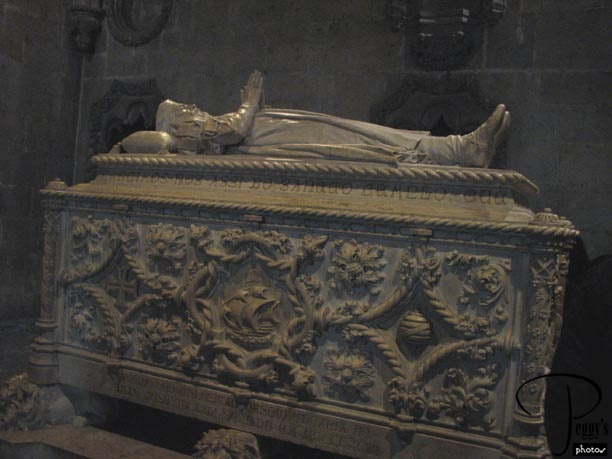
Tomb of Vasco da Gama inside the Mosterio dos Jeronimos, who discovered a direct sea route from Portugal to Asia. Note the designs on bottom of the tomb––the three main designs of Manueline architecture: (from the left) the cross of the Knights Templar, who funded the voyages; the caravel ship; and the armillary sphere. Also note the “ropes,” of the Manueline architecture.

Belem
Belem
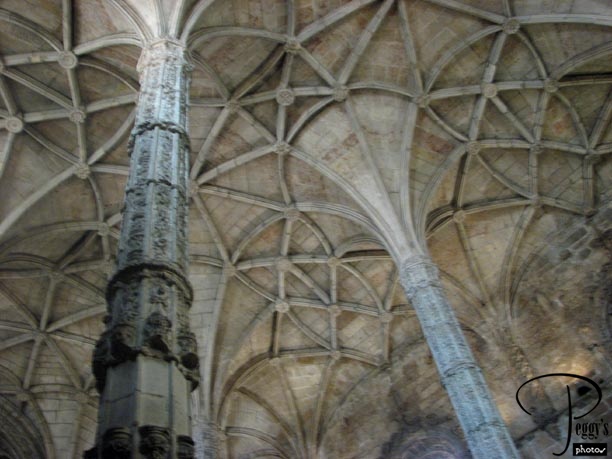
Intricate ceiling of the monastery.

Belem
Belem
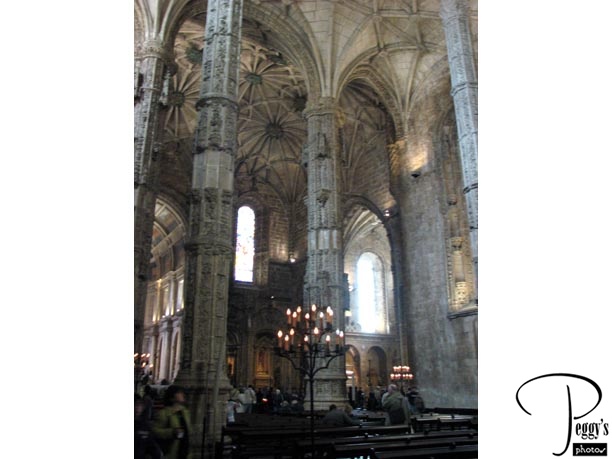
Inside the monastery.

Belem
Belem
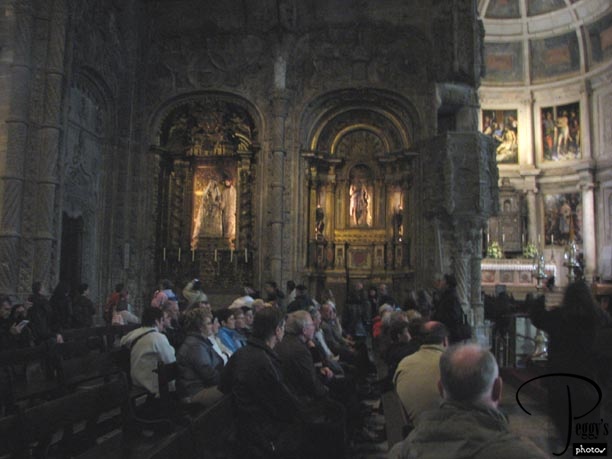
Also inside the monastery.

Belem
Belem
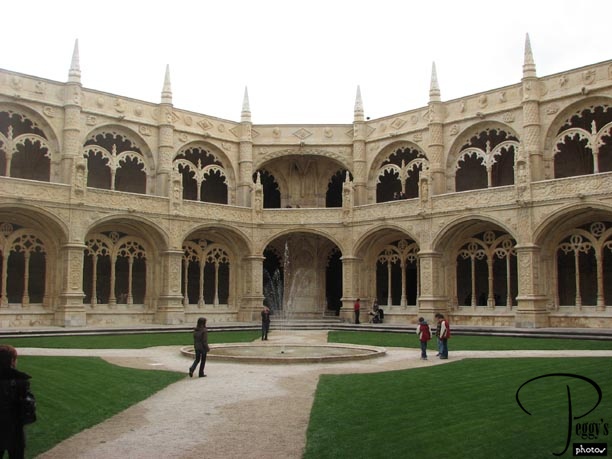
The very decorative Cloisters. Its lacy arcade is Manueline/Renaissance.

Belem
Belem
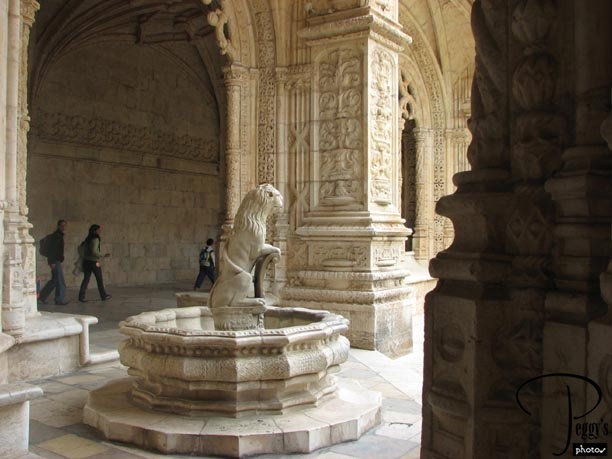
A waterfountain.

Belem
Belem
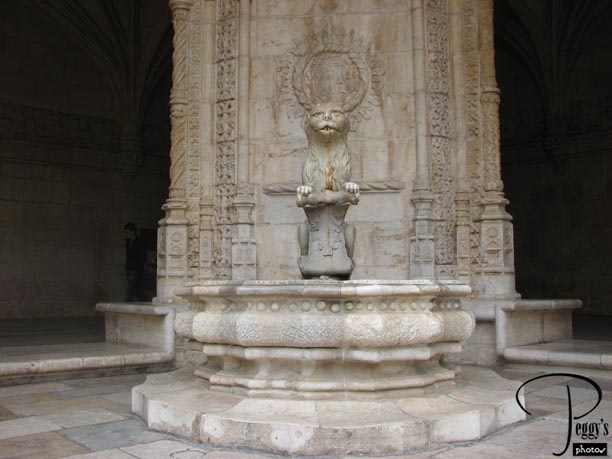
Front view of the fountain.

Belem
Belem
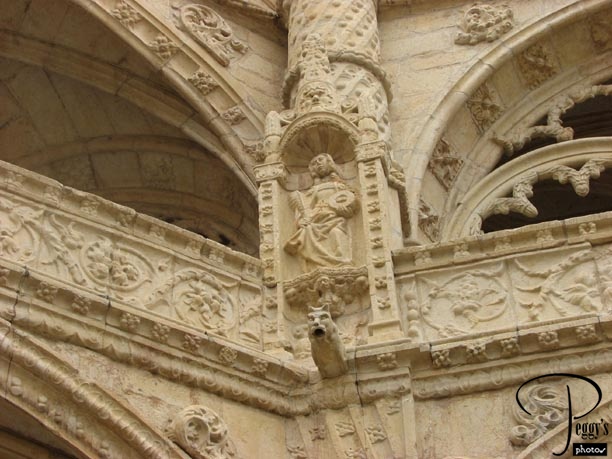
Close–up of some of the arches.

Belem
Belem
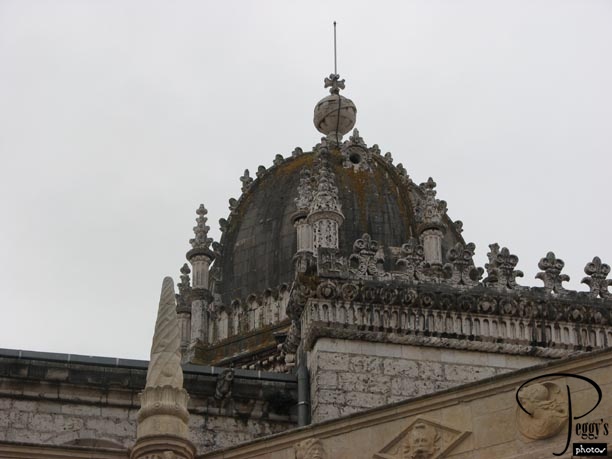
View of the dome from the Cloisters.

Belem
Belem
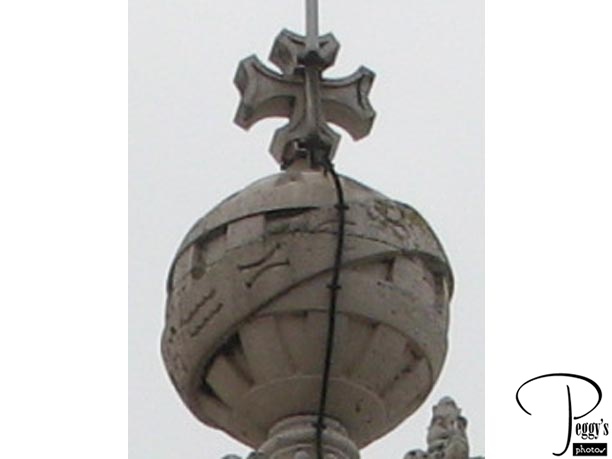
Close–up of the top of the dome––of an armillary sphere and cross of the Knights Templar.

Belem
Belem
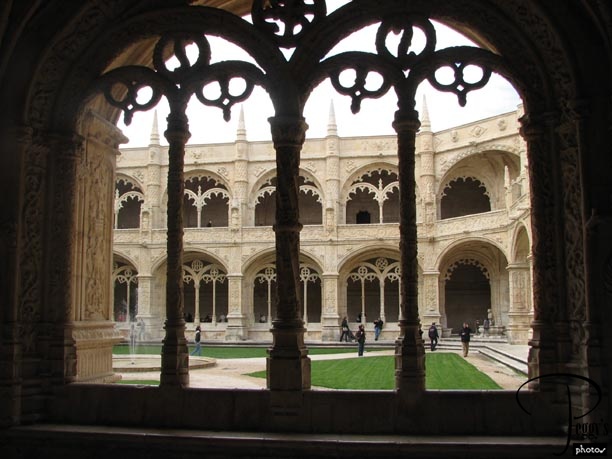
The Cloisters seen through two arches.

Belem
Belem
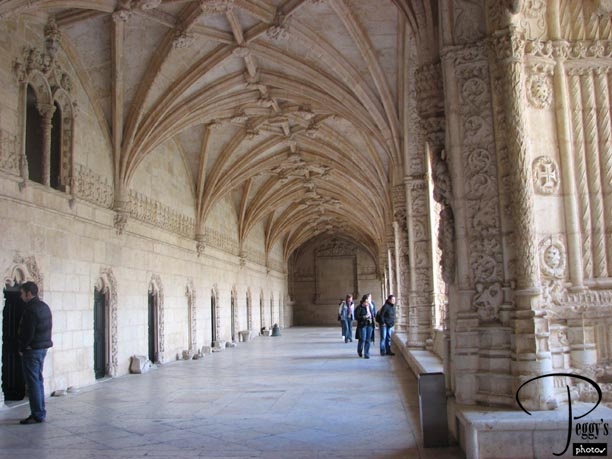
The corridor in the Cloisters.

Belem
Belem
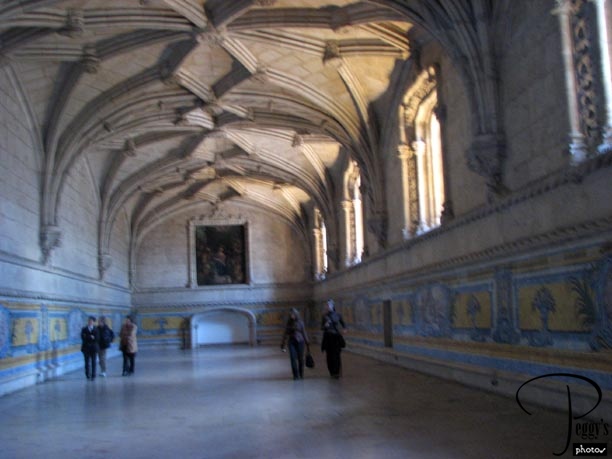
My Globus tour group had already left the monastery––they were off on an optional tour to Sintra. As I had already been there, I stayed behind in Belem. On my walk around the monastery after they had left, I found myself in the Refractory, lined with 18th–century tiles.

Belem
Belem
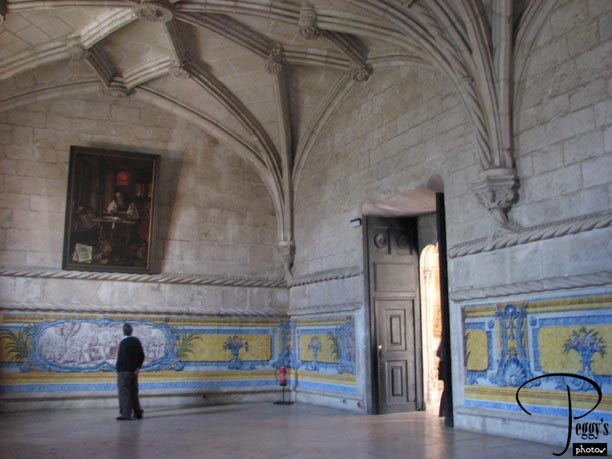
Very beautiful tiles here.

Belem
Belem
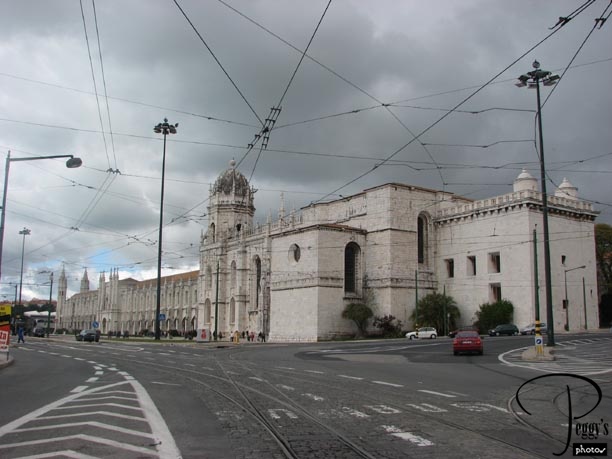
Looking back to the Mosteiro dos Jeronimos on my walk to Belem’s shops and stores.

Belem
Belem
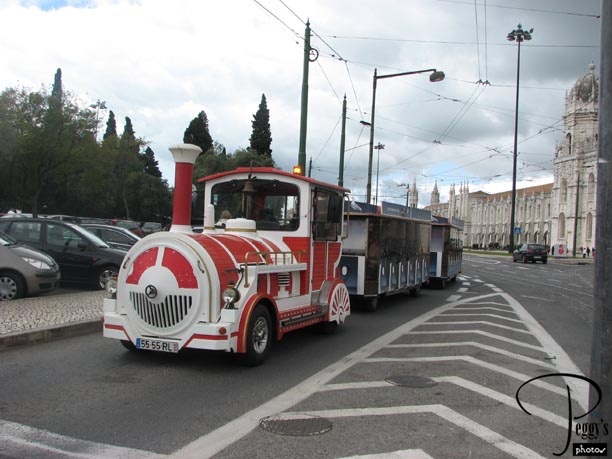
Another mode of Belem transportation.

Belem
Belem
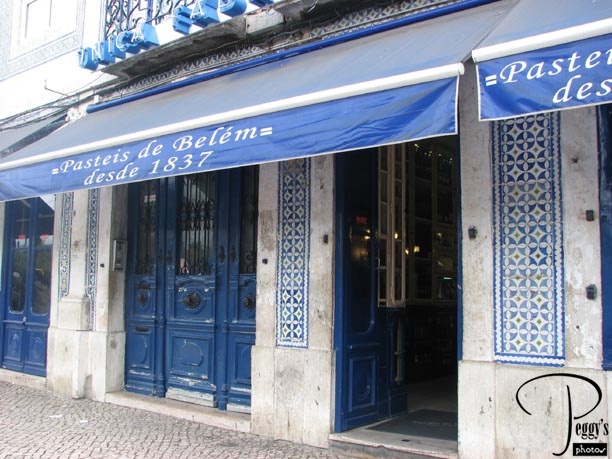
My destination: the Pasteis de Belem, established 1837. It is known for baking the best custard tarts in all of Portugal, made from a secret recipe. This we found out from our Inside Lisbon tour guides and Rick Steves also mentions it in his Portugal guide.

Belem
Belem
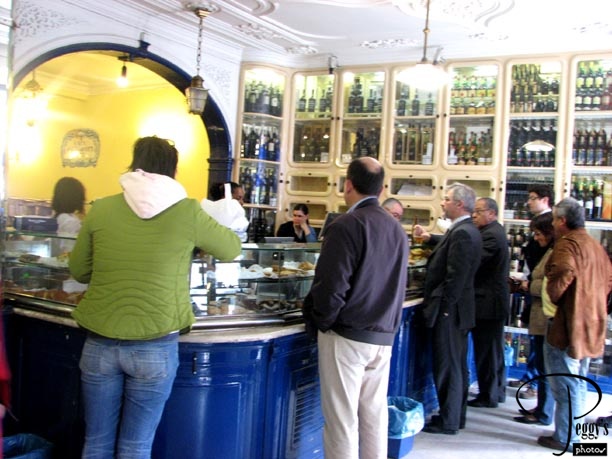
You can order and eat at the counter or sit down at a table in one of its many rooms.

Belem
Belem
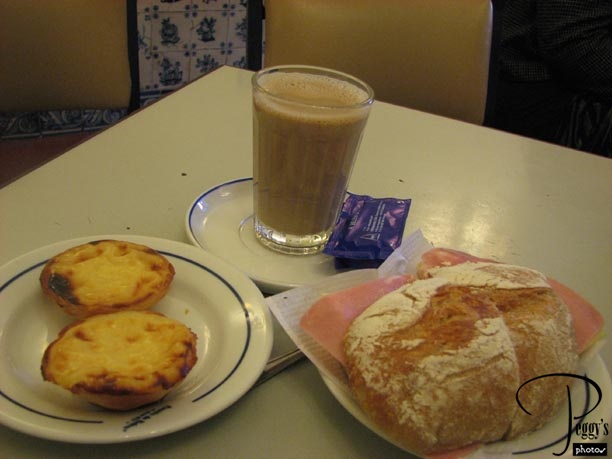
I sat down and had lunch: a ham and cheese sandwich (delicious, especially the freshly baked roll); coffee with milk (sometimes it is served hot in a glass, as it was here); and two absolutely delicious cream tarts. Cost for all: 4,20 euros.

Belem
Belem
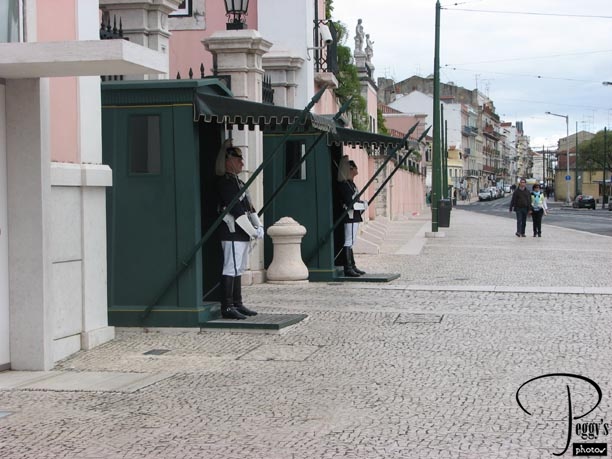
On my way past the pink Presidential Palace to the Couch Museum.

Belem
Belem
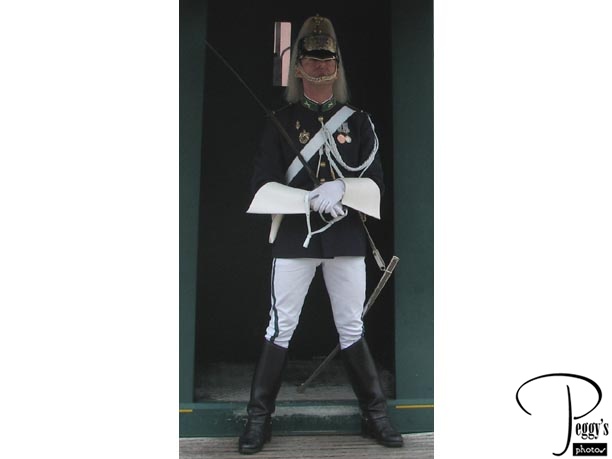
One of the guards with a bit of a strange stance.

Belem
Belem
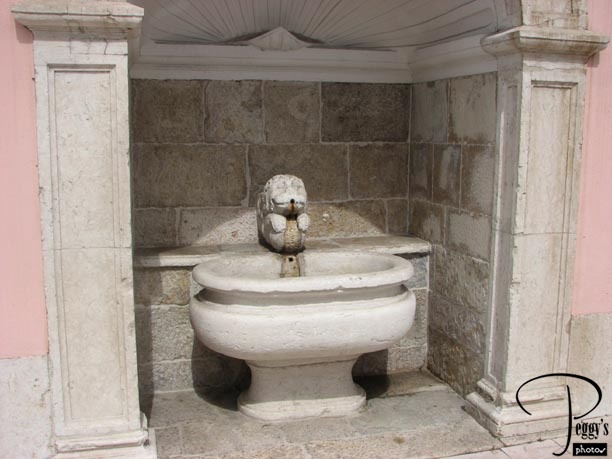
Another water fountain.

Belem
Belem
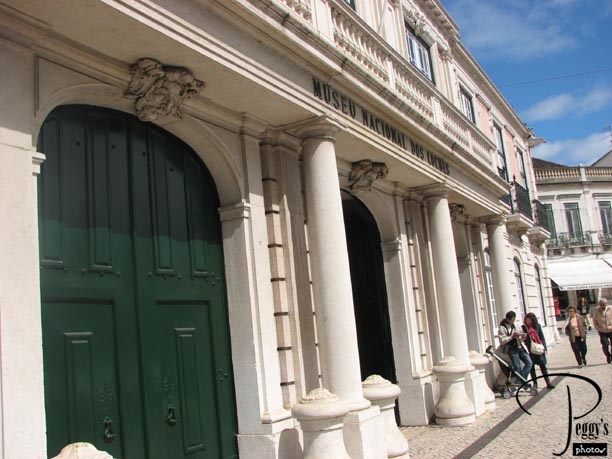
The Museu dos Coches (the Coach Museum). In 1905, the last Queen of Portugal commissioned this museum to preserved her collection of royal coaches.

Belem
Belem
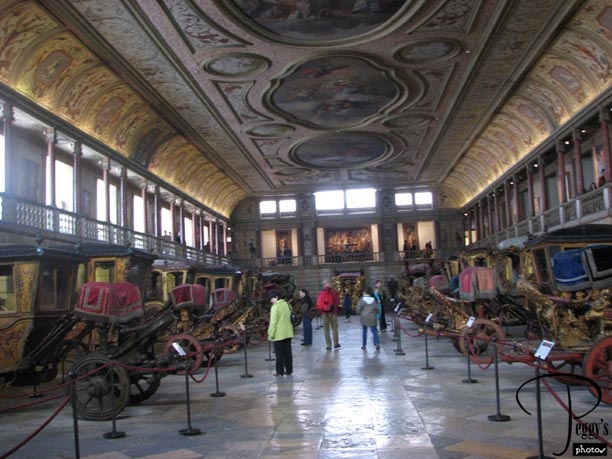
Inside the coach museum. It houses more than 70 exquisite coaches.

Belem
Belem
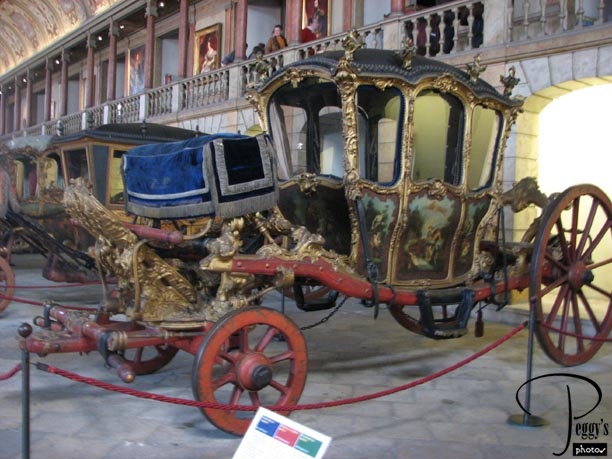
One of the couches, probably belonging to a king.

Belem
Belem
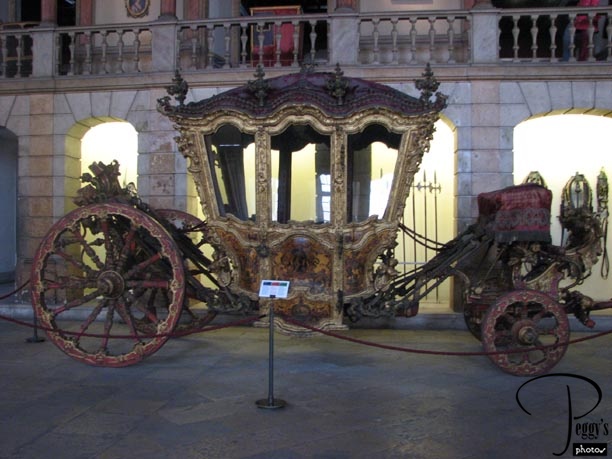
And another.

Belem
Belem
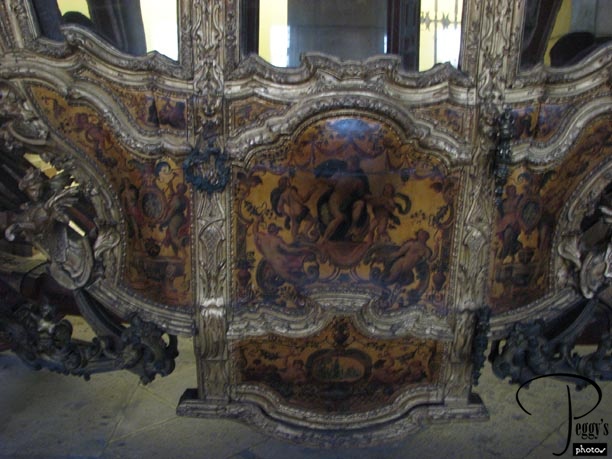
The side of a coach.

Belem
Belem

The back of a coach (the lighting was not very good in the museum and no flash was allowed).

Belem
Belem
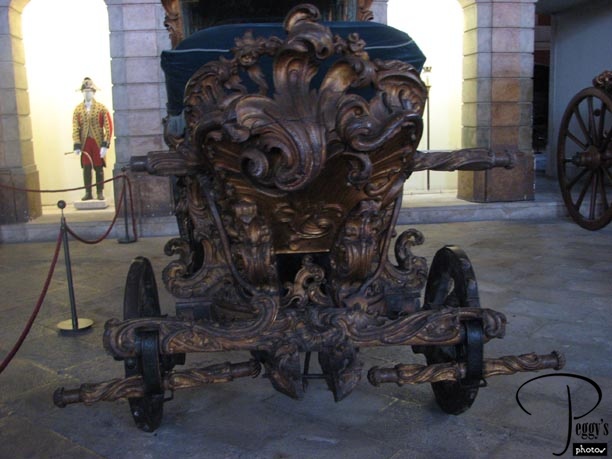
The front of a coach.

Belem
Belem
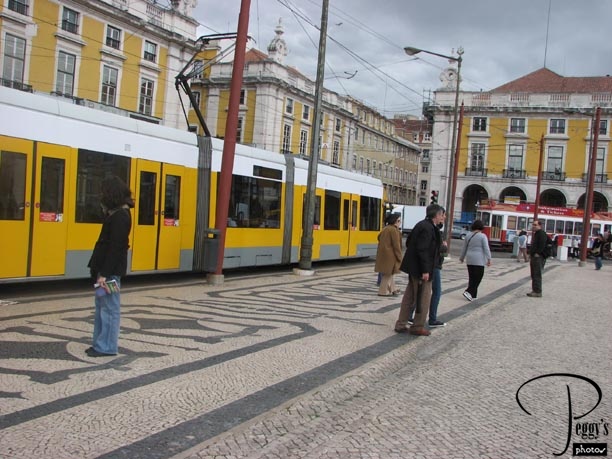
After visiting the Coach Museum, I walked back to across from the Pasteis de Belem to catch Tram 15 back to the Placa do Comercio.

Belem
Lisbon
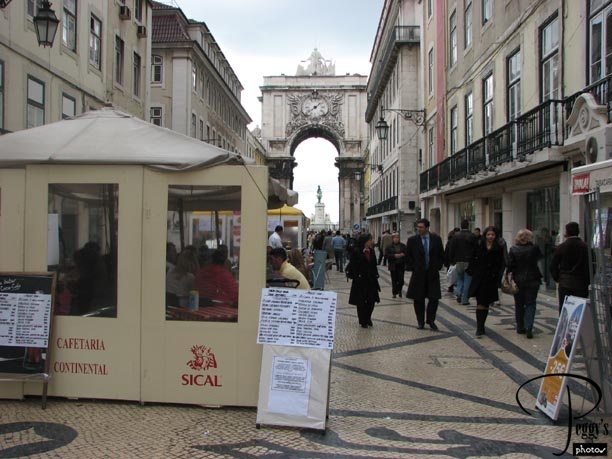
I walked through the arch to the Rua Augusta, the pedestrian street, where I stopped in some tourist shops to look for gifts. Photo: Looking back through the arch to the Placa do Comercio.

Lisbon
Lisbon
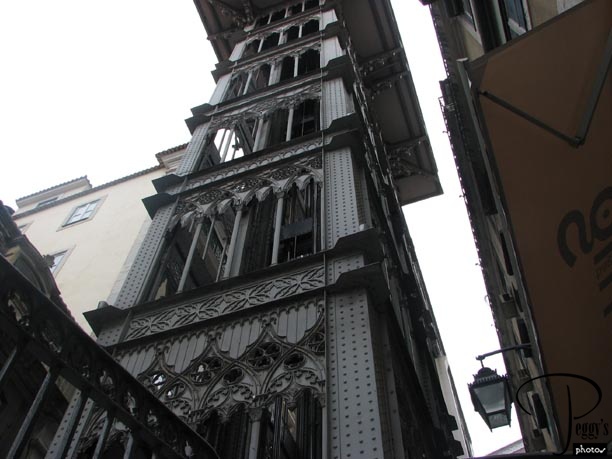
I was not going to leave Lisbon without taking a ride up the incredible Elevador de Santa Justa, off the Rua Augusta. The 150–foot–tall Elevador was built in the early 1900s. It architect was an apprentice of Eiffel.

Lisbon
Lisbon
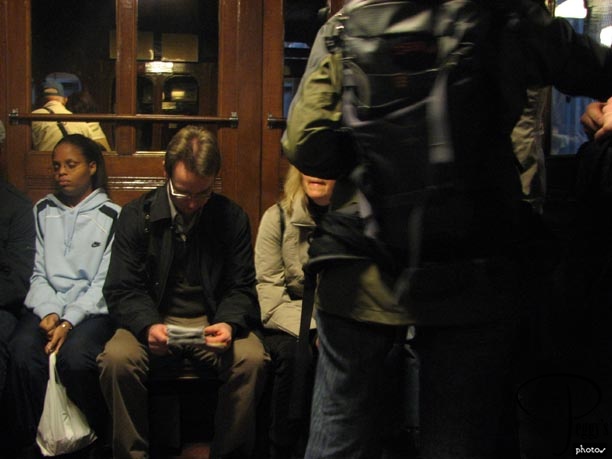
The elevator cars are quite large but not many passengers are allowed on at one time, so your wait to go up the elevator can be long. The ride up was very quick and not at all scary.

Lisbon
Lisbon
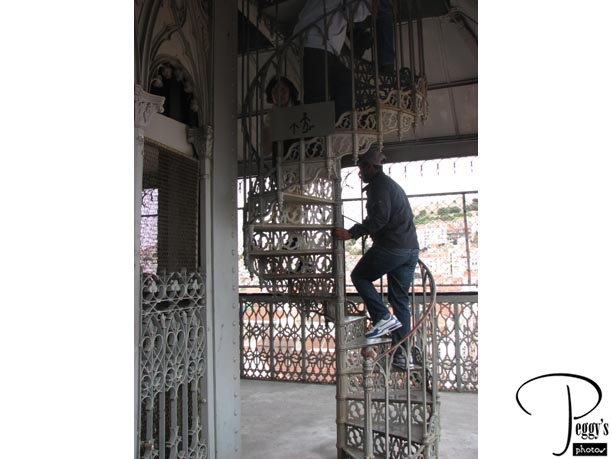
Up at almost the top. This man is climbing up to the very top to the coffee shop. I stayed at the level where I was––I am not fond of heights or of winding stairs.

Lisbon
Lisbon
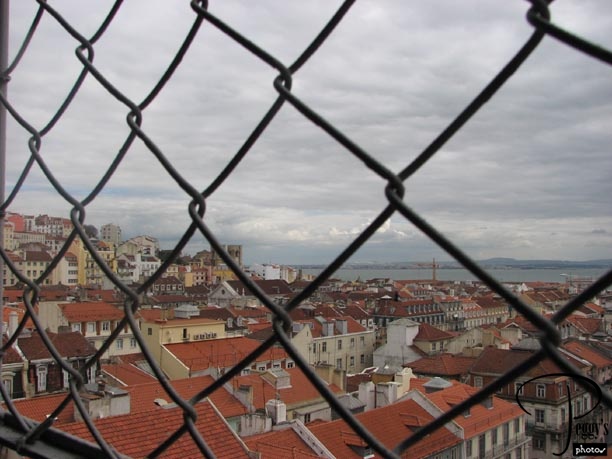
View of Lisbon from the almost top of the Elevador de Santa Justa. You can probably make out the Se Cathedral in Alfama.

Lisbon
Lisbon
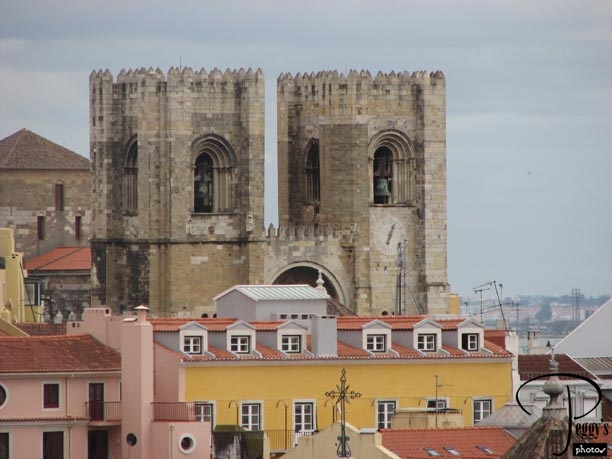
With my zoom lens, I could easily make it out.

Lisbon
Lisbon
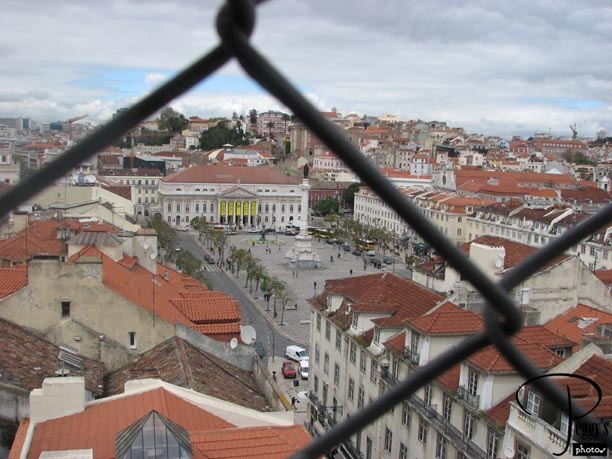
The Placa Dom Pedro IV (Rossio) below–– center of photo.

Lisbon
Lisbon
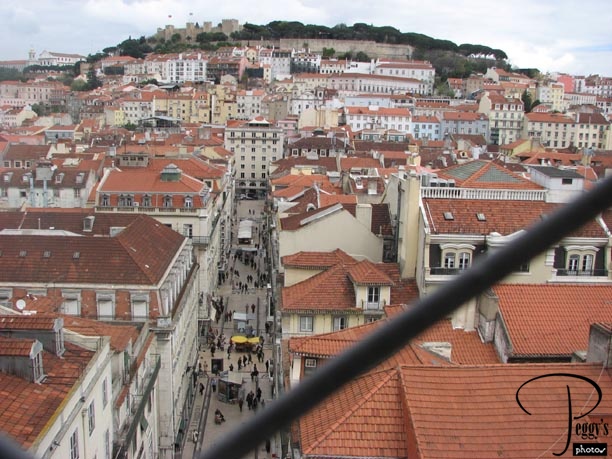
You can see the Castelo de Sao Jorge on the opposite hill––that was my next stop.

Lisbon
Lisbon
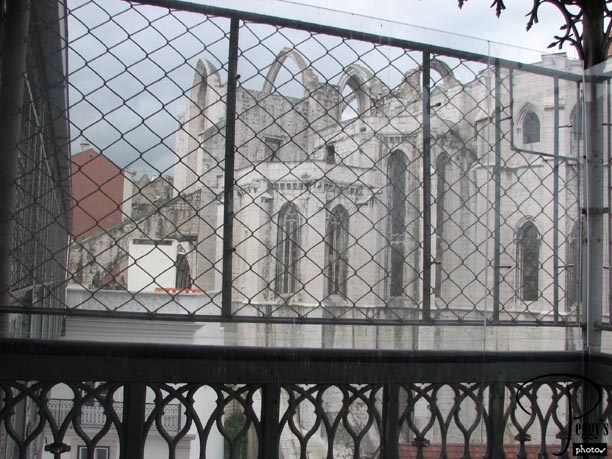
Looking back at the Igreja do Carmo.

Lisbon
Lisbon
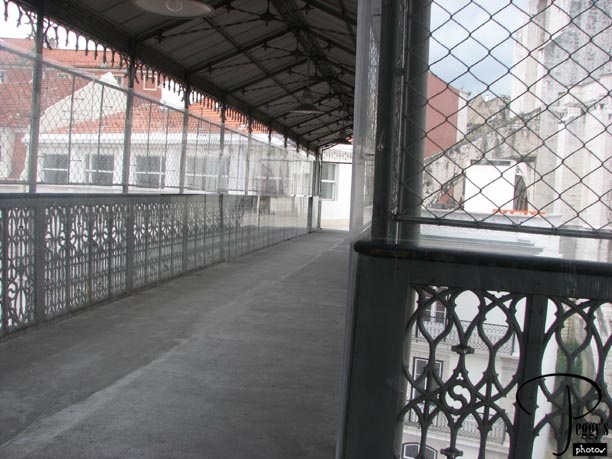
The walkway to the Igreja do Carmo and the Bairro Alto.

Lisbon
Lisbon
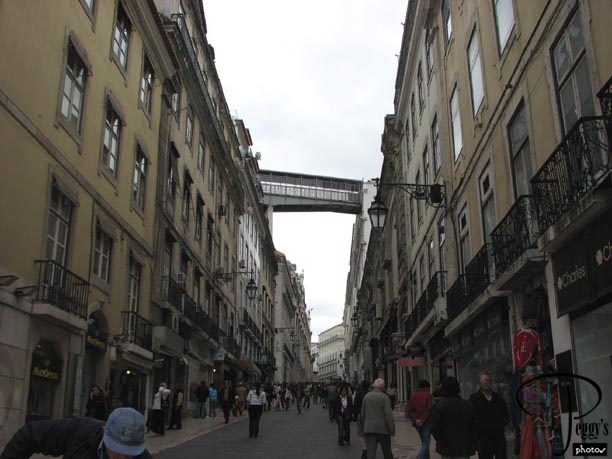
Off the Elevador and looking up at the walkway shown in the last photo.

Lisbon
Lisbon
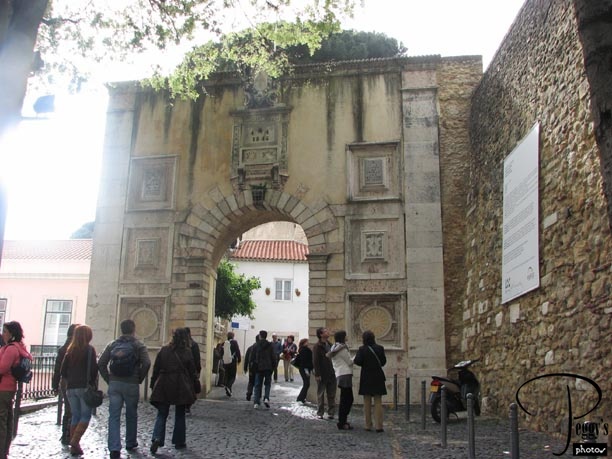
I next took at taxi to the castle gate of the Castelo de Sao Jorge in Alfama.

Lisbon
Lisbon
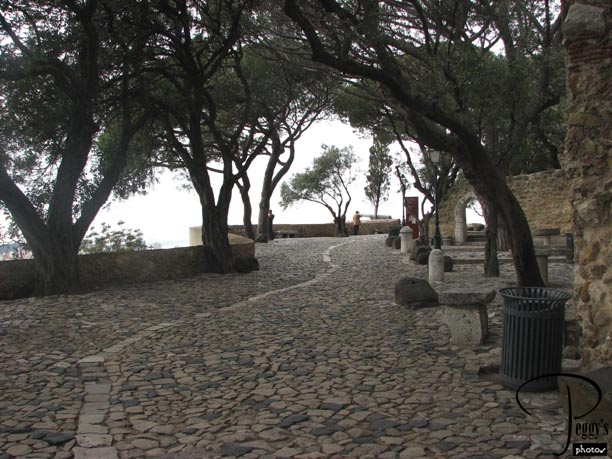
The Miradouro de Sao Jorge, one of the best viewpoints above the city, reached through the castle gate.

Lisbon
Lisbon
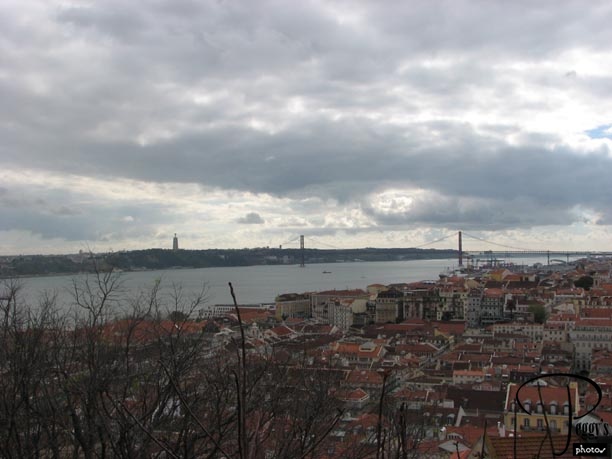
By now, you should know most of Lisbon’s landmarks and could find your way easily around Lisbon––right? But one last Lisbon geography lesson: We are now on the top of the hill in Alfama. From here, you can see the 25 de Abril bridge and the Cristo Rei statue. Belem is just past the bridge to the right.

Lisbon
Lisbon
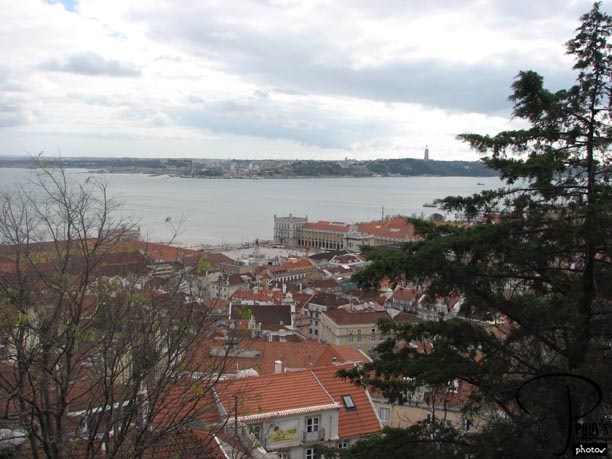
You can still see the Cristo Rei statue, but now also the Placa do Comercio in the middle of the photo next to the River Tejo.

Lisbon
Lisbon
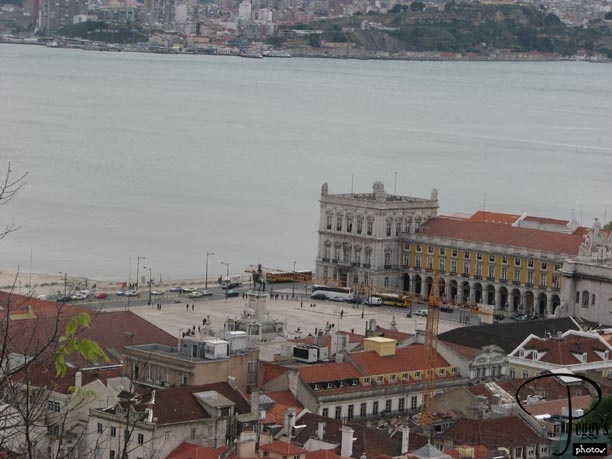
Close–up of the Placa do Comercio.

Lisbon
Lisbon
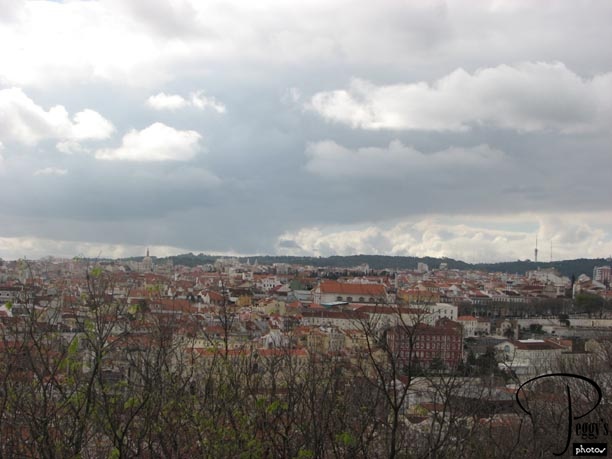
Moving away from the River Tejo, you can see in the middle left of the photo the Elevador de Santa Justa and the Igreja do Carmo in the Barrio Alto.

Lisbon
Lisbon
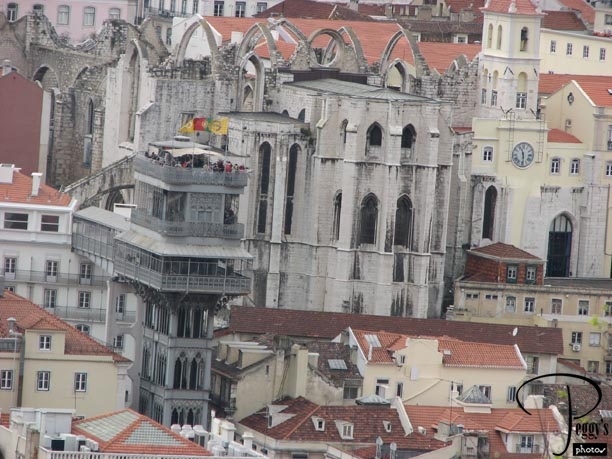
The Elevador de Santa Justa and the Igreja do Carmo taken with my zoom lens.

Lisbon
Lisbon
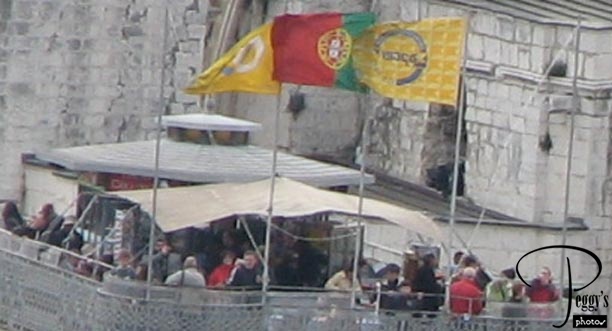
I was curious that if I blew up the last photo we could spy on the people drinking coffee at the top of the Elevador de Santa Justa––yes, we can.

Lisbon
Lisbon
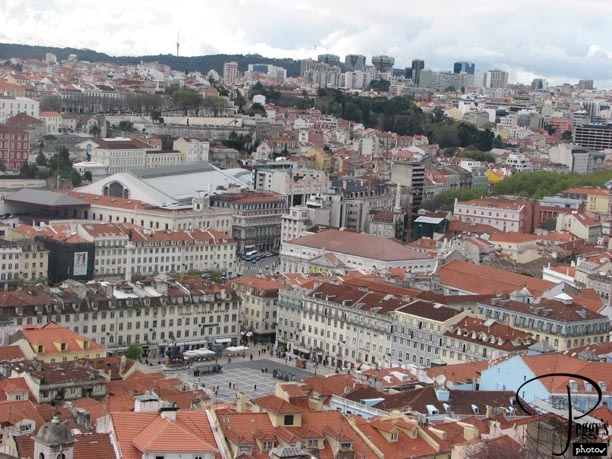
Moving to the right, in the middle front of this photo is the Praca da Figueira and behind it you can see the Dom Pedro IV statue in the Praca Don Pedro IV (Rossio).

Lisbon
Lisbon

Moving again to the right, my Hotel Mundial appears in the bottom middle. The grassy line in the back of the photo is the Avenida Liberdade.

Lisbon
Lisbon
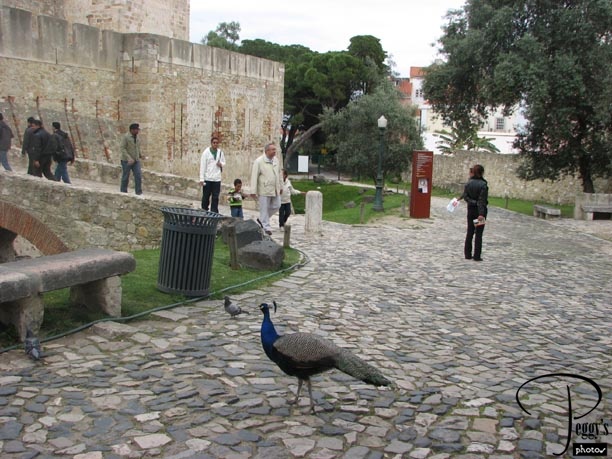
Peacocks at the entrance to the castle.

Lisbon
Lisbon
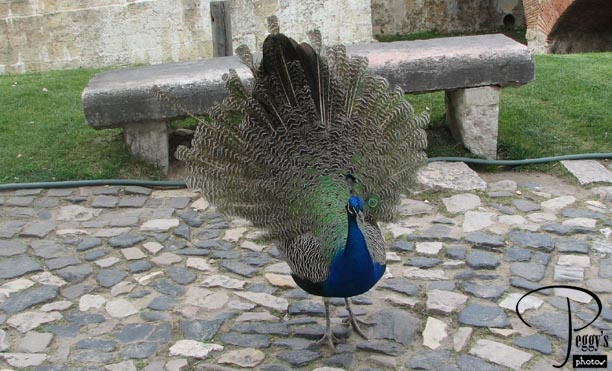
One peacock giving us a show.

Lisbon
Lisbon

The Castelo de Sao Jorge was built by the Moors in the 8th century. After Portugal’s first king, Alfonso Henriques, beat the Moors in the 12th century, the castle became a royal residence. However, 400 years later, in the 16th century, the kings moved to the palace at the Praca do Comercio and the castle fell into ruins, helped along by the 1755 earthquake. It was rebuilt in the 1960s.

Lisbon
Lisbon
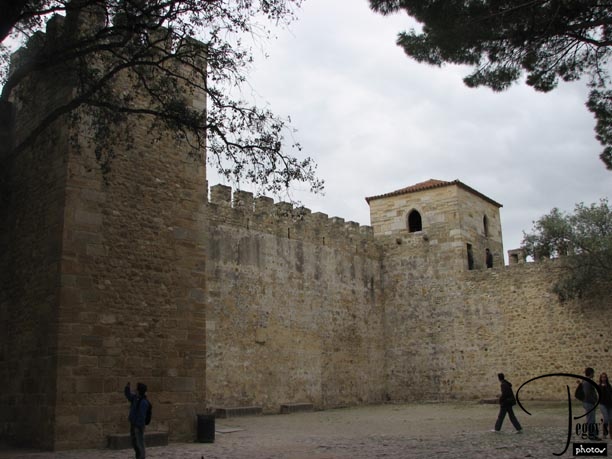
Inside the castle.

Lisbon
Lisbon
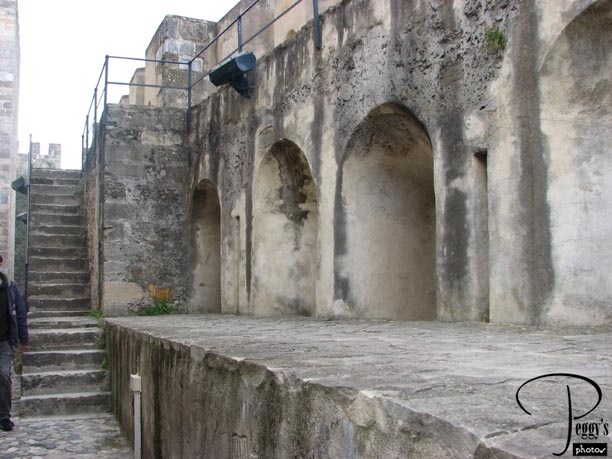
Steps up to the ramparts.

Lisbon
Lisbon
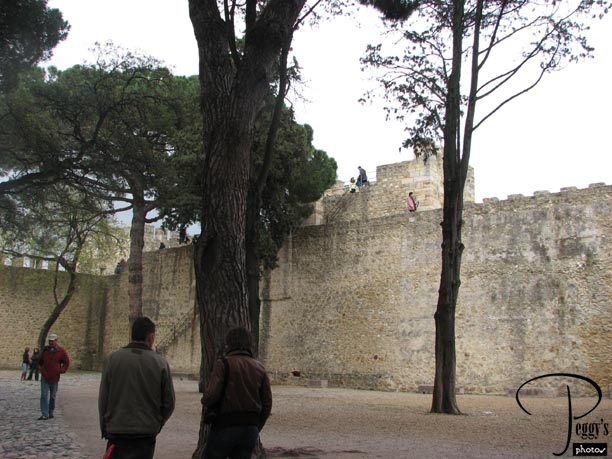
Some people have climbed up to the ramparts.

Lisbon
Lisbon
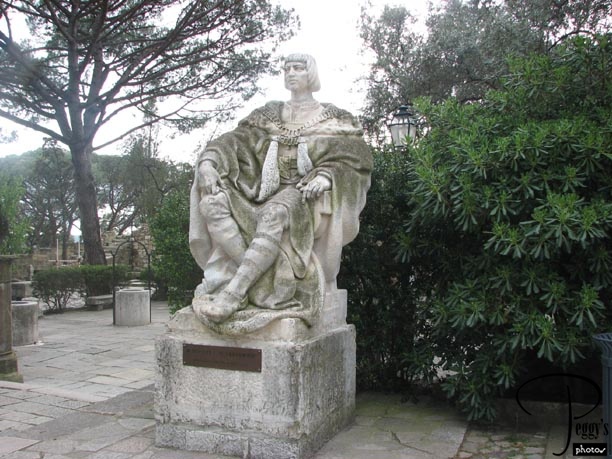
Statue of Portugal’s first king, Alfonso Henriques.

Lisbon
Lisbon

The village of Santa Cruz lies within the castle walls.

Lisbon
Lisbon
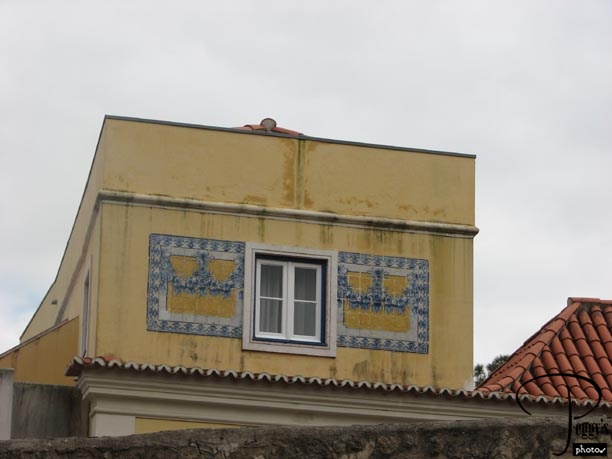
Top of one of the houses in the village.

Lisbon
Lisbon
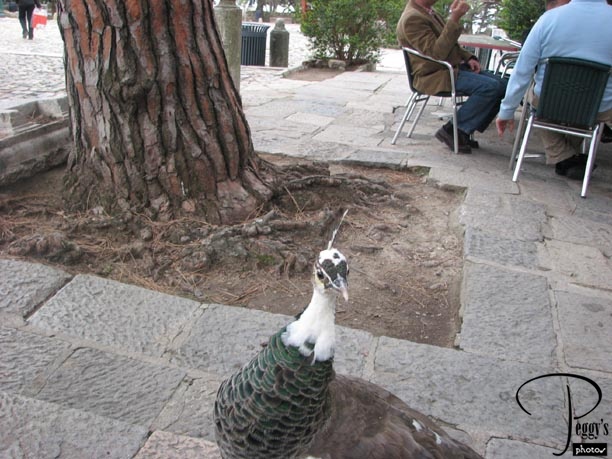
I was feeling hungry and stopped at the cafe here for a sandwich, pastry, and coffee. I was the only one eating outside on the patio, so I was the only one who this peacock came over to visit. Actually, what is trying to tell me is “you don’t want to know what I am going to do to you if you don’t share your food with me.”

Lisbon
Lisbon
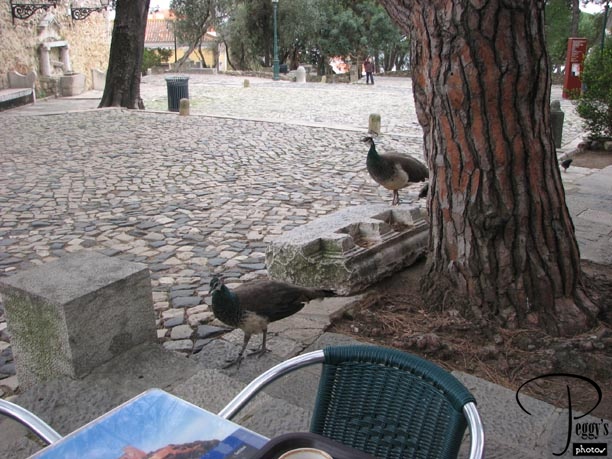
To back up the threat, its gang started approaching.

Lisbon
Lisbon
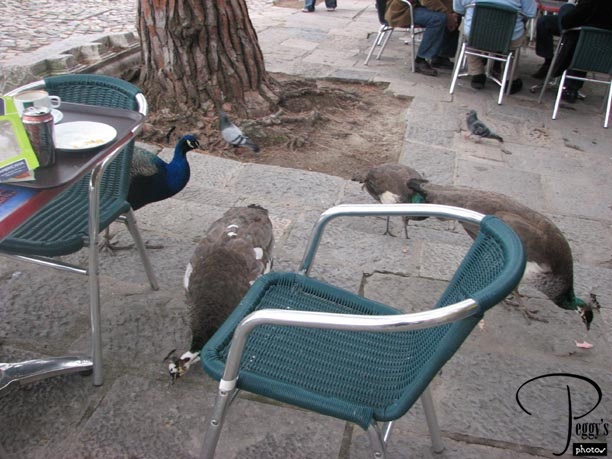
I decided that I better share. I didn’t care about my sandwich––it was prepackaged on white bread and wasn’t very good, but my cake with fruit in it was delicious and I did get to sneak a few bites of it.

Lisbon
Lisbon
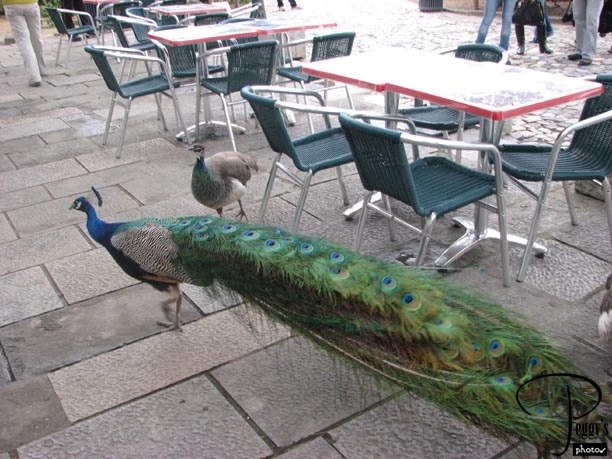
The most beautiful of all the peacocks. He didn’t spread his tail––it would have been breathtaking.

Lisbon
Lisbon
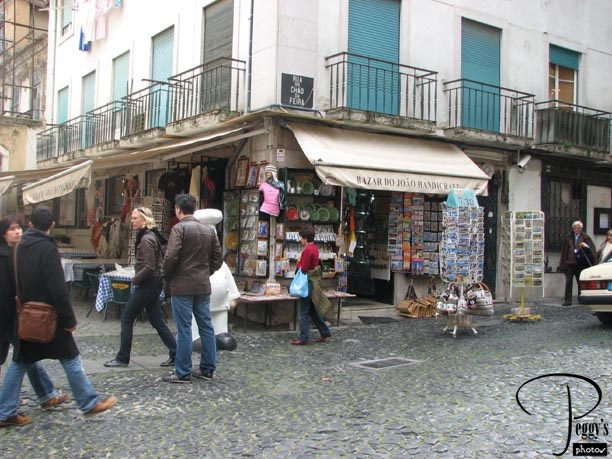
Souvenir store outside the castle. I was waiting to see if a taxi would drop anyone off so I could get a ride down the hill, but first a Carris van came and I took that down. It was only 1,30 euros (much less than a taxi) and its route was right to the Praca da Figueira, near my hotel. I missed the mention of this easy shuttle in my Rick Steves’ book. My two shuttlemates were a couple from Poland.

Lisbon
Fado Night
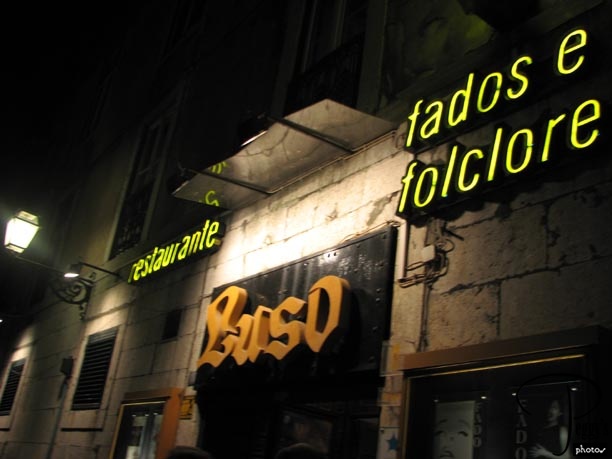
Globus offered an optional Fado Night with Dinner (with all the wine you can drink), which I went on. It was held at the Cafe Luso. On the cafe’s website, it said that the greatest fado singer, Amalia Rodrigues, made her debut here.

Fado Night
Fado Night
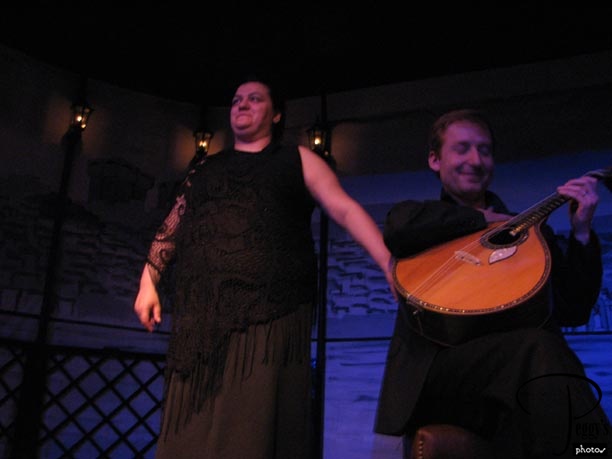
I have put three movie clips on this website of the Cafe Luso Fado singers: Go to Movies, Western Europe, Portugal, Movies, “Portuguese Fado Singer––2, Lisbon; Portuguese Fado Singer––3, Lisbon; and “Male Fado Singers Duet, Lisbon.” You may recognize the Fado singer in this photo as she also sang at the first Fado show that I went to (movie clip of her on page 23, “Portuguese Fado Singer––1.” From the Cafe Luso website: Fado “Cannot be explained, only felt.” You need to keep listening to the movie clips. The more you do, the more you are going to like this music. My favorite is the male Fado duet. I also put on a very short “Portuguese Guitar Solo, Lisbon” clip.

Fado Night
Fado Night
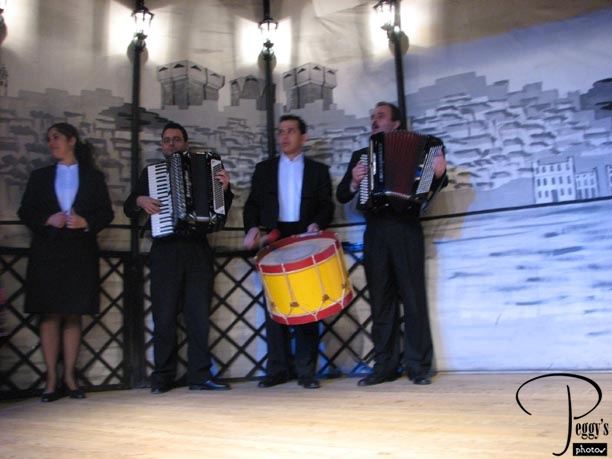
The Portuguese folk dancers’ band and singer. I have put two movie clips on this website of the folk dancers performing also at the Cafe Luso: Go to Movies, Western Europe, Portugal, “Portuguese Folk Dancing, Lisbon” and “Folk Dance Finale, Lisbon.” The dinner and show was a very enjoyable end of a very enjoyable day.
